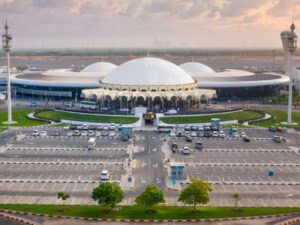The recent upheaval in Bangladesh, formerly East Pakistan, has captivated both global and local audiences. What began as a minor protest among students over job quotas escalated into widespread tensions, riots, and ultimately the ouster of Prime Minister Sheikh Hasina Wajid, who had led the country for 20 years. This situation offers critical lessons for emerging and frontier economies like Pakistan.
Despite Bangladesh’s impressive economic indicators, such as a GDP per capita of $2,400—on par with India and significantly higher than Pakistan’s $1,500—the country experienced significant unrest. Bangladesh has been growing sustainably at 5-6% per annum and is on track to transition from the UN’s Least Developed Country (LDC) status in 2026 to upper middle-income status by 2031.
India-Bangladesh Trade Faces Uncertainty Amidst Political Crisis
In stark contrast, one Bangladeshi taka can buy more than two Pakistani rupees, reflecting Bangladesh’s sustained growth in exports, foreign exchange reserves, and moderate government debt. Bangladesh’s government debt-to-GDP ratio stands comfortably at 40%, compared to Pakistan’s 70%, and its interest rate is a manageable 8.5%, significantly lower than Pakistan’s 19.5%.
The question arises: Can a government with such strong economic indicators still be toppled? Wouldn’t the incumbent rulers feel secure overseeing such impressive rates of economic growth, only to be shocked by an abrupt downfall?
Without delving into conspiracy theories, countries like Pakistan must draw lessons from Bangladesh’s economic journey. GDP growth and other macroeconomic indicators tell only a superficial part of the story. Discontent can arise due to widening income inequality. While the top elite may see their wealth grow multiple times faster than the overall GDP, the middle and lower-income groups struggle to maintain inflation-adjusted growth.
Ideally, if an economy grows by 5% annually over a decade, the real growth for lower-income people should be 6-15% per year, compared to the elite’s 1-5%. Growth in the lower strata of society leads to higher economic growth due to their high marginal propensity to consume.
In Pakistan’s case, a GDP growth rate of 3-4% over the next few years is alarmingly insufficient to quell public dissent over worsening real incomes. While efforts are being made to stabilize the currency, secure IMF bailouts, enact reforms, attract FDI through the Special Investment Facilitation Council (SIFC), and increase the tax-to-GDP ratio, more comprehensive measures are needed.
For instance, industries should be offered competitive energy rates, and tax rates should be adjusted for every job created or salary paid. The goal is to discourage capitalists from parking their wealth in real estate or bank deposits and instead encourage job creation for middle- and lower-income families.
If the rate of increase in purchasing power for the lower to middle class surpasses that of the upper and elite classes, it will lead to better social spending, higher tax revenues, increased economic activity, improved entrepreneurial spirits, enhanced domestic consumption, foreign investment catering to domestic demand, a talented labor pool, reduced brain drain, and overall satisfaction with policymakers.
Nobel laureate Muhammad Yunus Appointed Head Of Interim Government In Bangladesh





